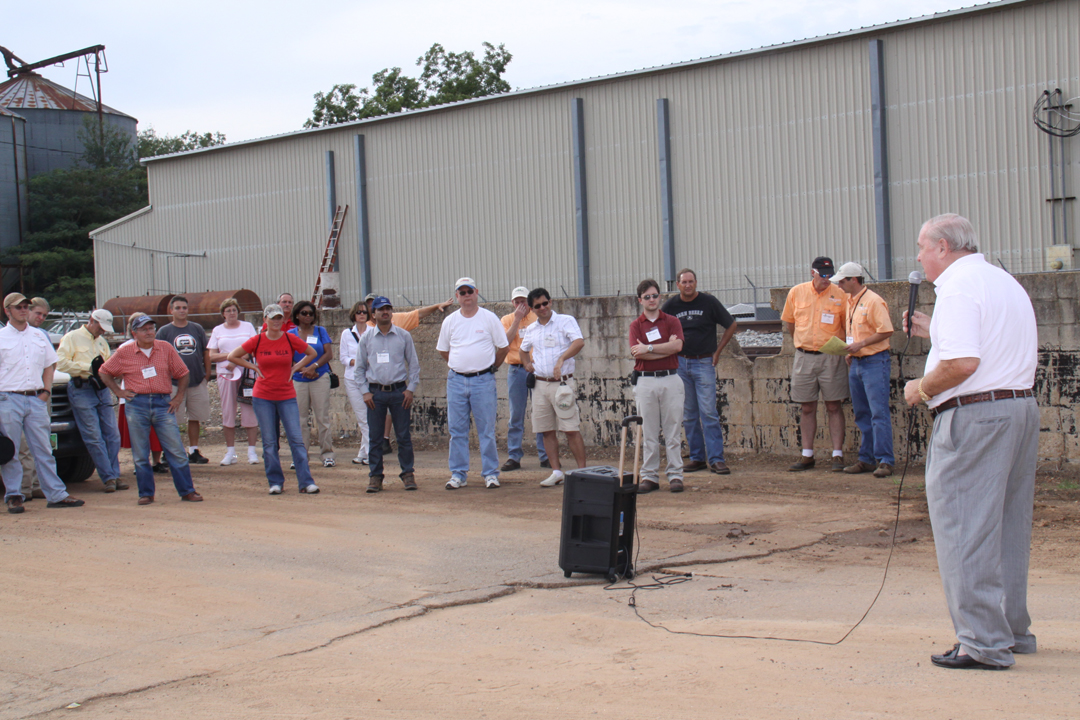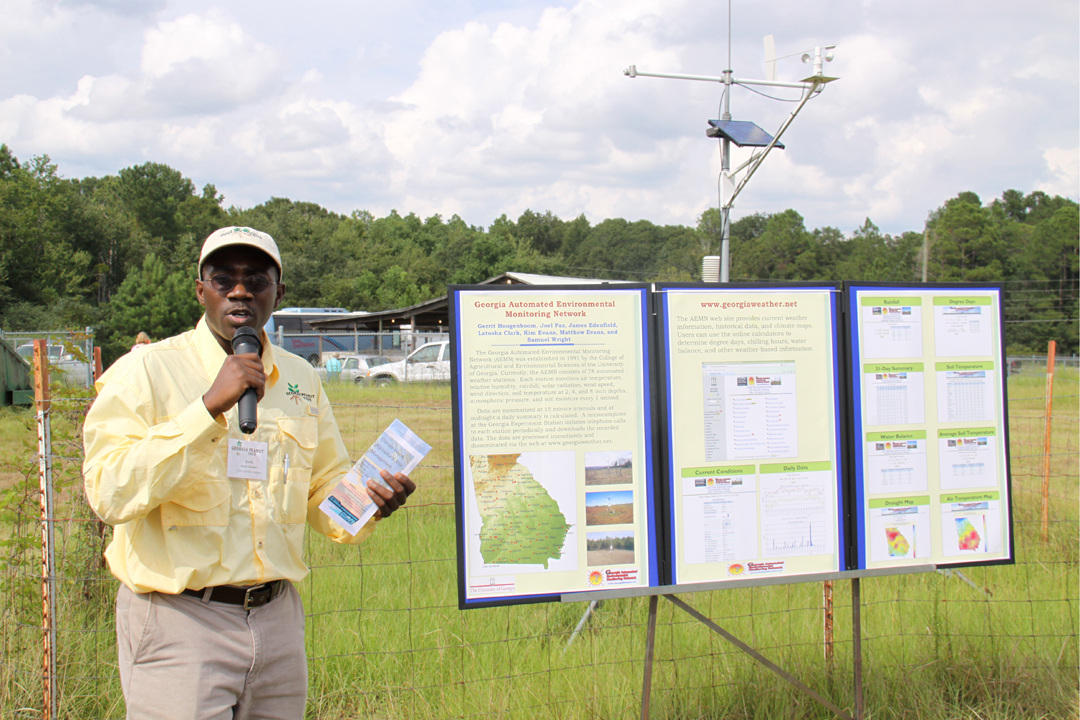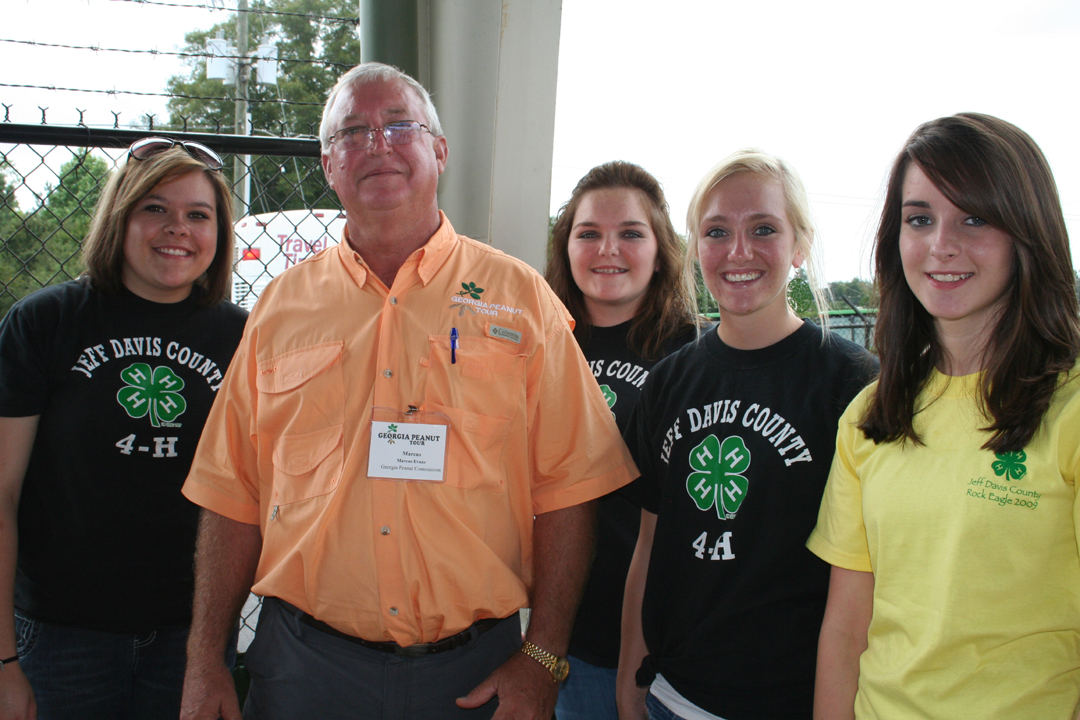
Jack Chastain of Doster Warehouse visits with Georgia Peanut Tour attendees.
After leaving McRae, Ga., the Georgia Peanut Tour headed over to Doster Warehouse, located on Georgia Highway 280, in Rochelle, Ga. Doster Warehouse owns and operates three peanut buying stations in South Georgia and also contracts with other individually owned stations to supply a farmerstock base for the shelling operation. Opened in 1945 by Norman B. Doster, Doster Warehouse offers its grower customers a competitive market with great support services and its manufacturer customers with the industry’s highest quality shelled peanuts. Doster started the warehouse selling feed, seed, fertilizer and lime and eventually put up his first peanut warehouse to begin storage on his own. Today Doster employs around 70 people in its home operation and operates subsidiaries in various towns in Georgia.


